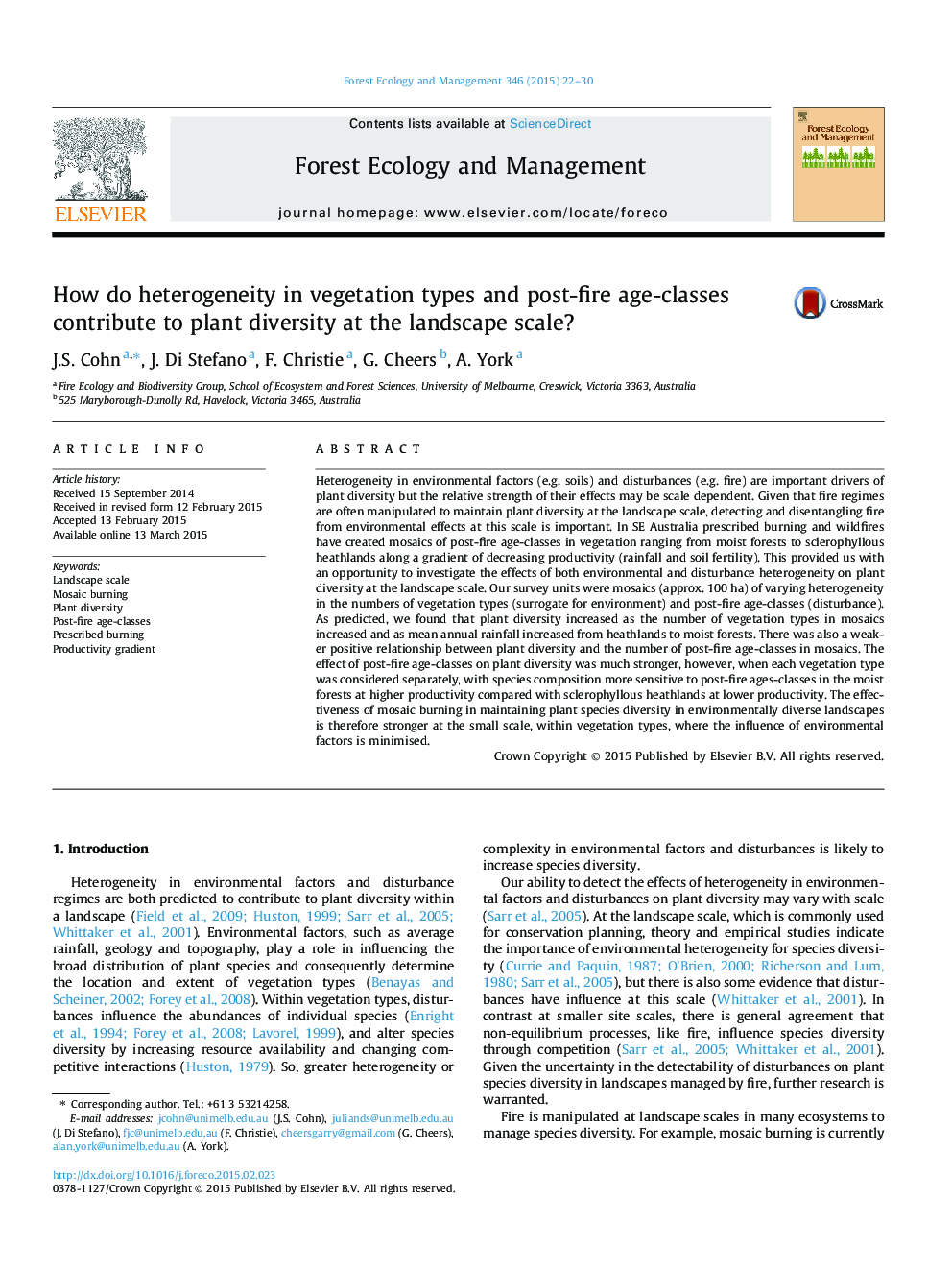| کد مقاله | کد نشریه | سال انتشار | مقاله انگلیسی | نسخه تمام متن |
|---|---|---|---|---|
| 86326 | 159179 | 2015 | 9 صفحه PDF | دانلود رایگان |
• We examine heterogeneity in environmental factors and fire on plant diversity.
• Fire effects were weakly detected above environmental factors at landscape scale.
• Fire effects were stronger at smaller scale.
• Fire effects were stronger at the higher end of a productivity gradient.
• Fire effects on plant diversity in conservation systems are detectable at small scale.
Heterogeneity in environmental factors (e.g. soils) and disturbances (e.g. fire) are important drivers of plant diversity but the relative strength of their effects may be scale dependent. Given that fire regimes are often manipulated to maintain plant diversity at the landscape scale, detecting and disentangling fire from environmental effects at this scale is important. In SE Australia prescribed burning and wildfires have created mosaics of post-fire age-classes in vegetation ranging from moist forests to sclerophyllous heathlands along a gradient of decreasing productivity (rainfall and soil fertility). This provided us with an opportunity to investigate the effects of both environmental and disturbance heterogeneity on plant diversity at the landscape scale. Our survey units were mosaics (approx. 100 ha) of varying heterogeneity in the numbers of vegetation types (surrogate for environment) and post-fire age-classes (disturbance). As predicted, we found that plant diversity increased as the number of vegetation types in mosaics increased and as mean annual rainfall increased from heathlands to moist forests. There was also a weaker positive relationship between plant diversity and the number of post-fire age-classes in mosaics. The effect of post-fire age-classes on plant diversity was much stronger, however, when each vegetation type was considered separately, with species composition more sensitive to post-fire ages-classes in the moist forests at higher productivity compared with sclerophyllous heathlands at lower productivity. The effectiveness of mosaic burning in maintaining plant species diversity in environmentally diverse landscapes is therefore stronger at the small scale, within vegetation types, where the influence of environmental factors is minimised.
Journal: Forest Ecology and Management - Volume 346, 15 June 2015, Pages 22–30
